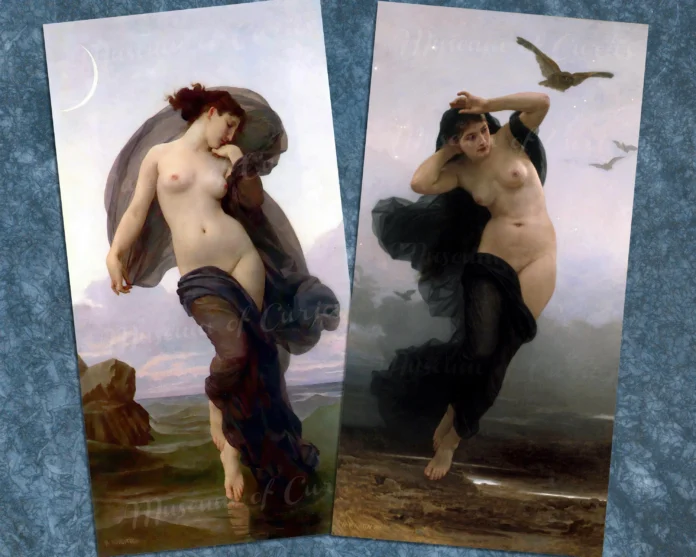There’s a lot to say when you talk about society’s view of female beauty. Women enjoy a powerful position in the world of art. They are mythical characters and goddesses, and at the same time, they are dangerous. They are desired by men on one hand and feared on the other. Outside the world of art, however, women are different. Just like the painting hanging on the wall, women are treated in a single dimension that is objectified.
Nevertheless, from the preferred white skin and tiny waists to fuller thighs and particularly tanned skin, beauty standards have changed a lot. Furthermore, with the advent of cosmetics and surgeries, modern-day standards are more of a personal female choice. Keeping this in mind, no matter how these ideals evolve, they all reflect societal and cultural norms.
What Art History Tells us About Female Beauty Ideals

History tells us a lot about how society has viewed female beauty ideals and how it has been represented through art as conspicuous through old paintings of women. Starting from the paleolithic past, women were carved on mammoth ivory, worth enough to be honored. Soon, this ideology changed as women were depicted in the manner the artist saw them, which was intensely in line with the views of the patriarchal society.
From the Medieval time to the period of the Renaissance, we see an array of religious significance shown through famous portraits of women. This time, the beauty ideals aligned with the Holy Mary and Eve. Though depicted in their true spiritual form, women were symbolized as an object in whatever form they were painted. In real life, however, they continued to be the tool of desires, often showcased as a temptation for evil.
Beauty ideals evolved as World War II ended. As men died, women were found working in factories and farms. Now paintings of women celebrate them as heroes. And as the war ended, they were limited to taking up the role of a happy homemaker. The era of the 50s and 60s shows happy women in perfectly tailored clothes busy in their neat kitchens. In reality, these standardized demonstrations were ironic to the unhappiness hidden in these souls.
Woman as Art

Much of the historic age had emphasized beauty ideals regarding female anatomy. When you talk about physical ideals, you immediately think these cultural manifestations are changeable, yet some elements change more quickly than others. Even if the female gender creates the artwork, the images showcasing women align with the pattern established by the male artists.
For example, while looking at Sleeping Venus by Artemisia Gentileschi, you would immediately say it’s a work created by a female. You would always see passivity as a stark feature of these paintings. Also, you would notice the outline of a female regarding an hourglass. This actually reminds you that women are seen as clocks symbolizing the reason to freeze them in the moment of youth.
In line with the beauty ideals and female objectification, the following famous paintings of women are some examples of the most commissioned works in terms of the beauty ideals set by society and you can get reproductions of these beautiful paintings at 1st-art-gallery.com.
The Three Graces, by Raphael

The Three Graces by Raphael is a perfect example of showcasing feminine beauty where the Northern Renaissance walked by the notion of feminine beauty in terms of thin females having a rounded physique. The painting showcases small breasts, and the pubis reflects fertility ideals. This painting was said to be the first nude created by Raphael. Interestingly, the artist paints these three women carrying a spherical object, more like an apple, and thus draws a connection with goddesses in line with the ideals of purity and chastity.
Night (La Nuit) by William-Adolphe Bouguereau

Found at the Paris Salon, La Nuit depicts a nude woman partially covered with black cloth draping her legs. She is probably floating over the sea coast with bats and owls on the top. This piece of sensuality is created in a sense to appeal to men obviously through rounded prominent breasts and hourglass bodies. Bouguereau was famous for his simple sketches that particularly emphasized the female human body, and his paintings of nudes appealed to the wealthy patrons of that time.
A Little Taste Outside of Love, by Mickalene Thomas

The painting showcases African women represented in terms of what people particularly embraced about the female body. This included bigger breasts, broad hips, and bigger thighs. It became famous because it was beyond the typical depiction of Africans as enslaved people.
The artists explicitly portray a confident yet independent woman and combine it with the graphical background to build upon more spatial aspects of the artwork.
Conclusion
Thus, beauty ideals continuously evolve through time but often align with societal and cultural norms. Keeping this in mind, art represents women in quite a contradiction or a wide array. For example, while it has shown women worthy of worship, it has simultaneously created paintings showcasing women as objects, having a body to desire. History, however, has a huge role in setting the beauty ideals for females, which today have evolved, especially in how it is represented through art.
Even today, the basic concepts of appeal and sensuality remain at the core of women’s representative ideology. However, feminists have created an impact on enabling art to represent females beyond a subject of objectification. And for this reason, however, today’s beauty ideals give women more freedom, bringing them out of the chains of patriarchy and objectification.









